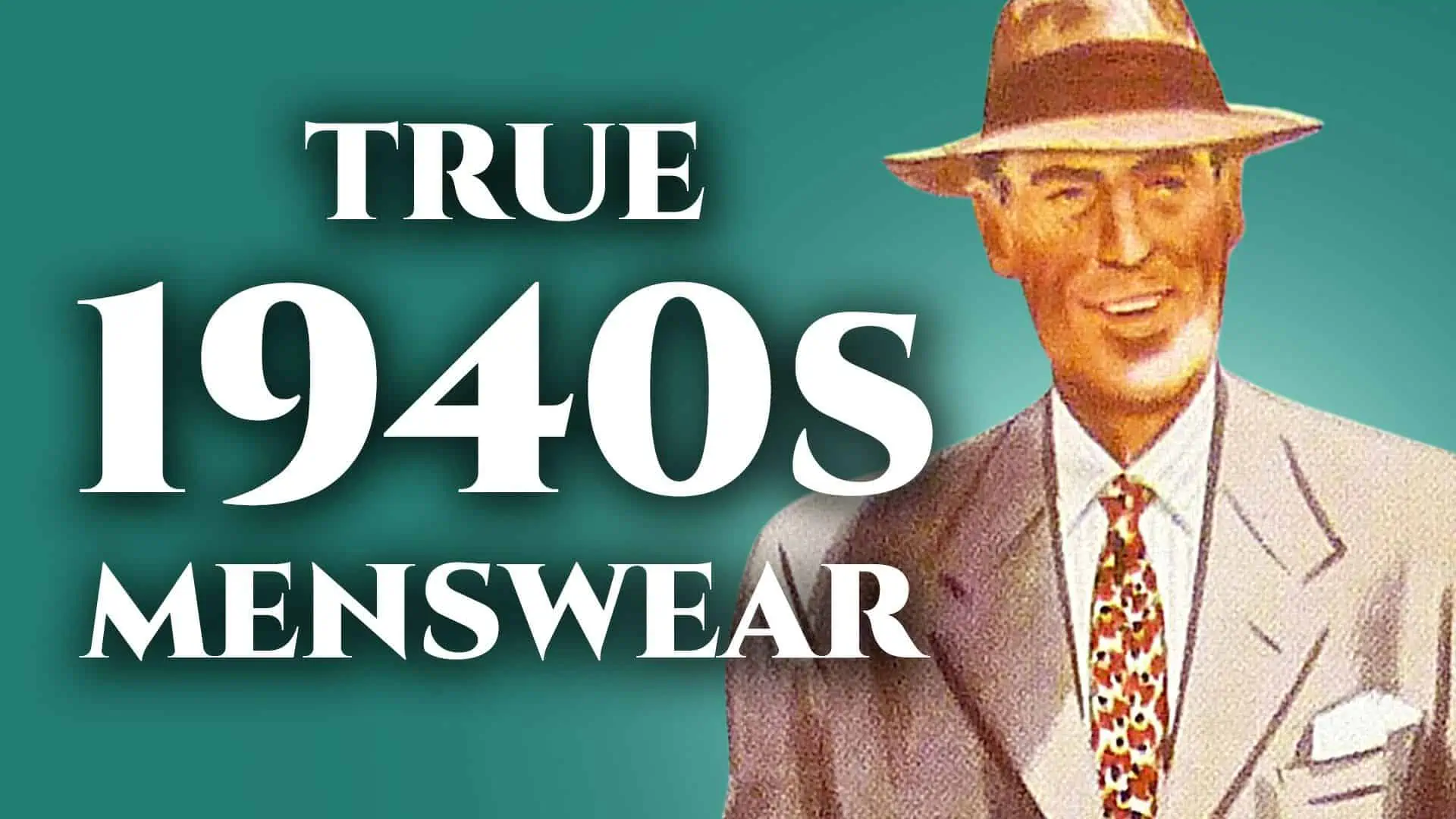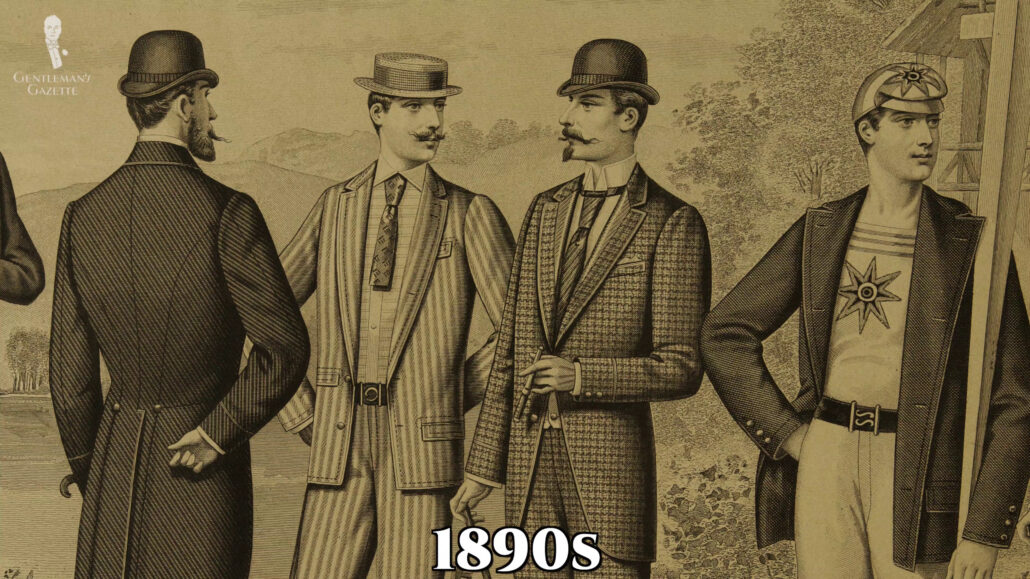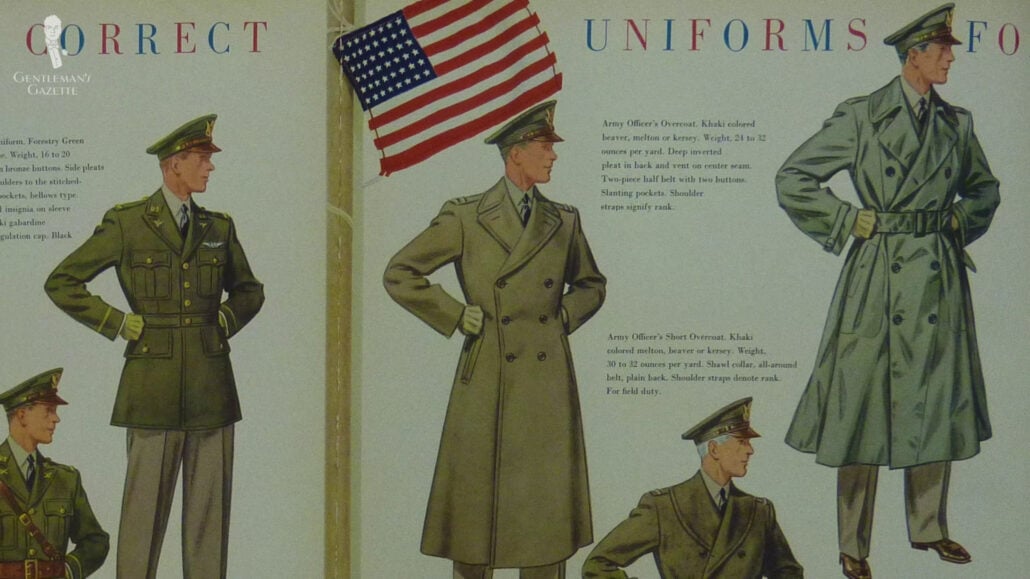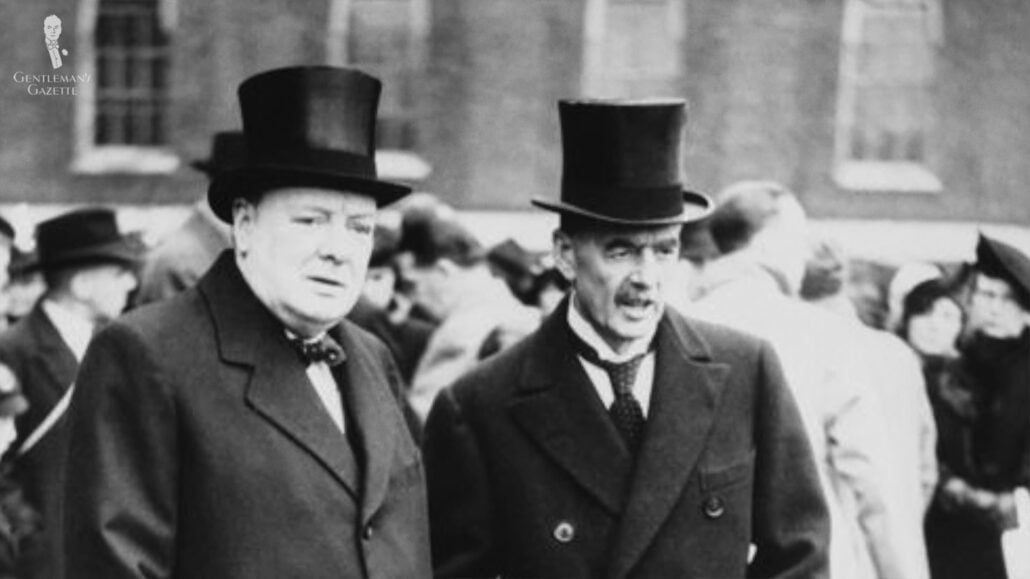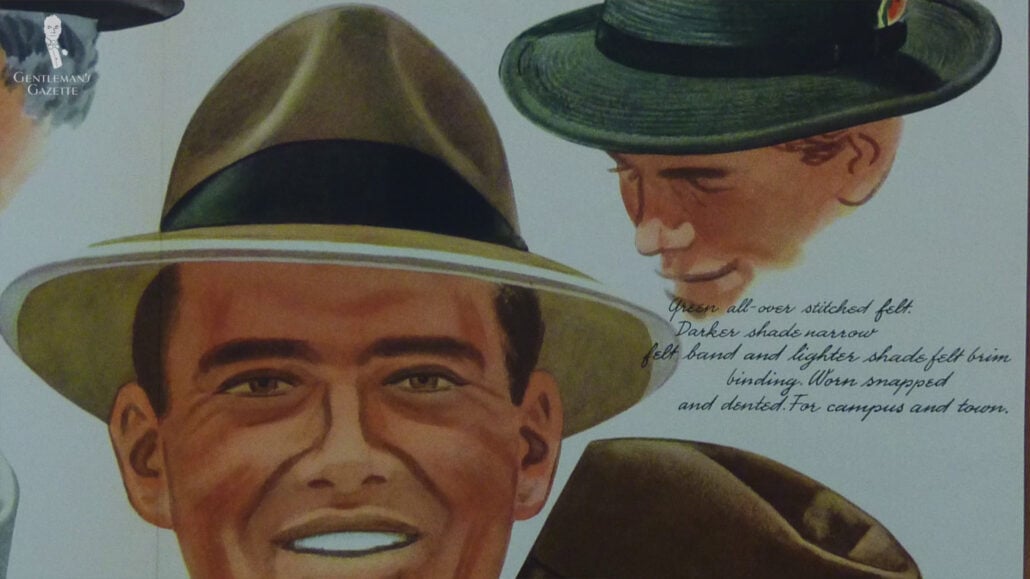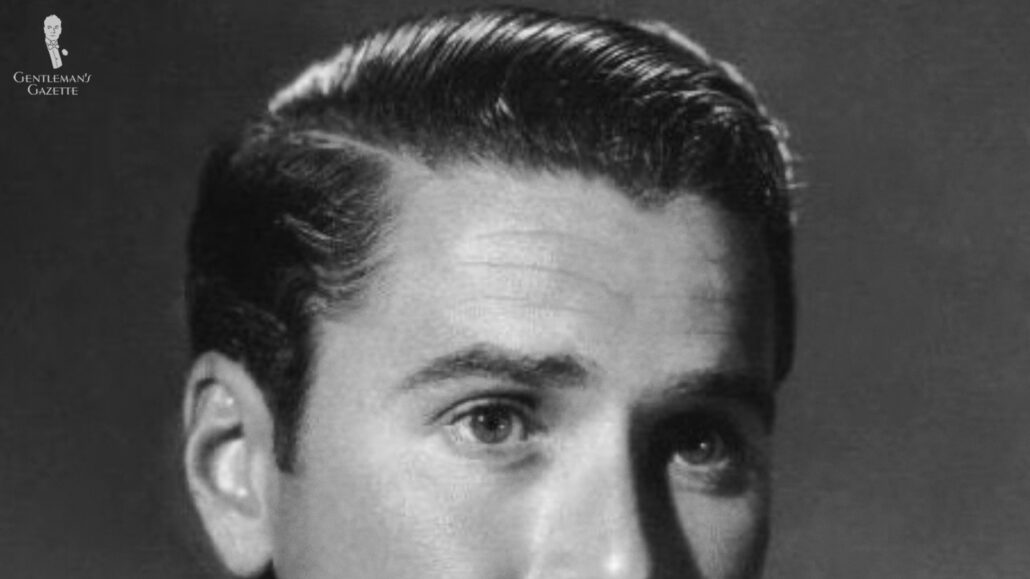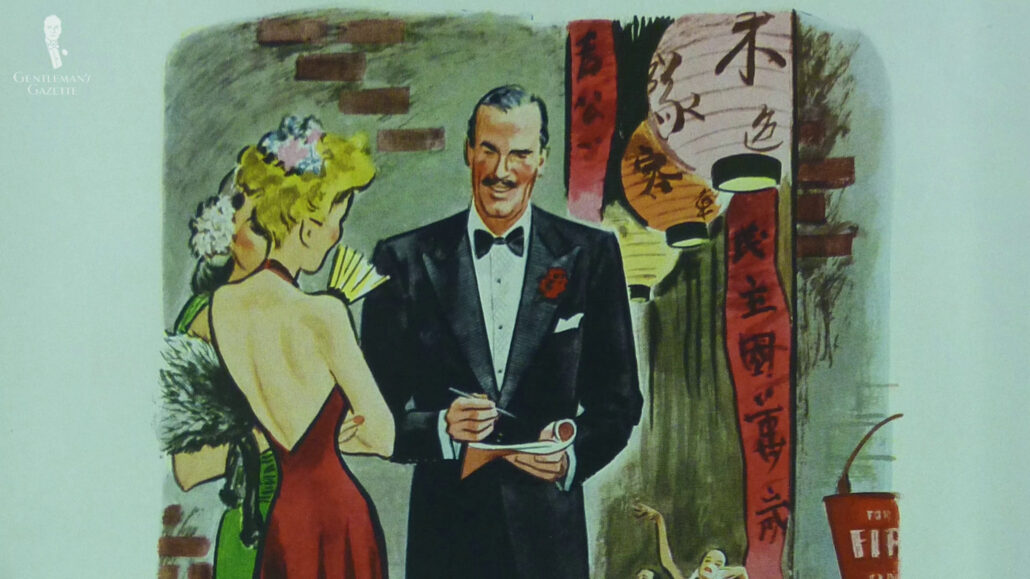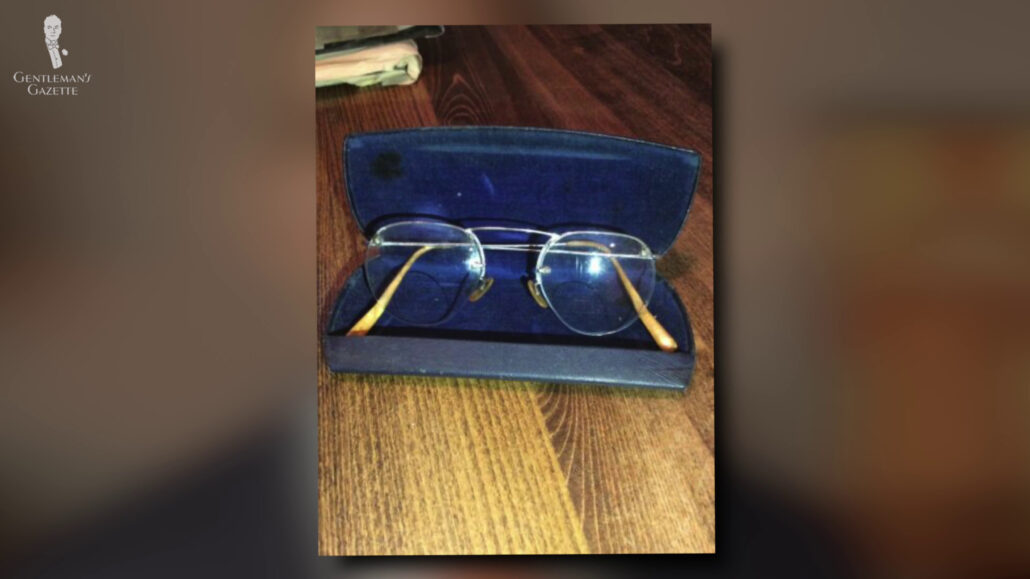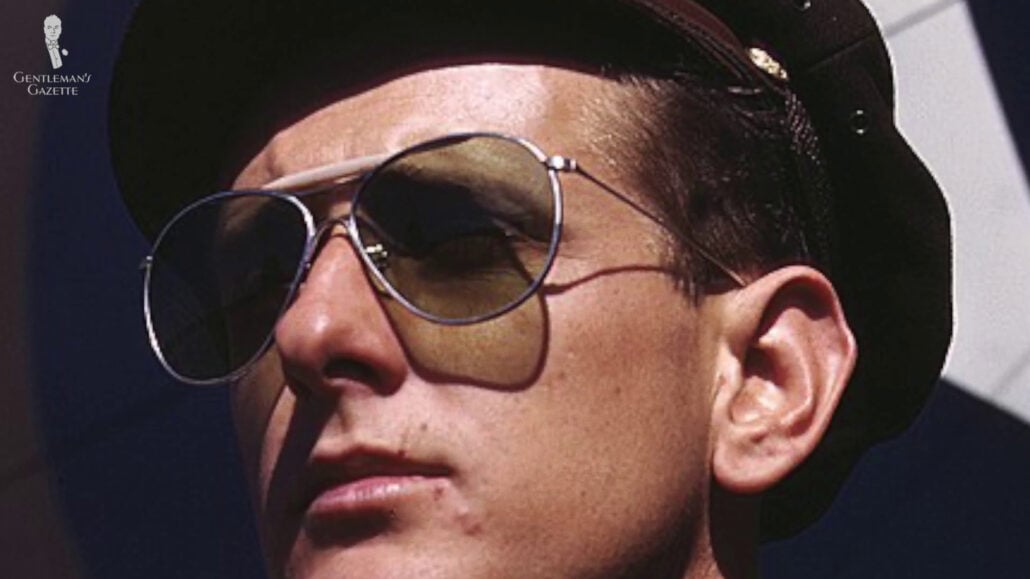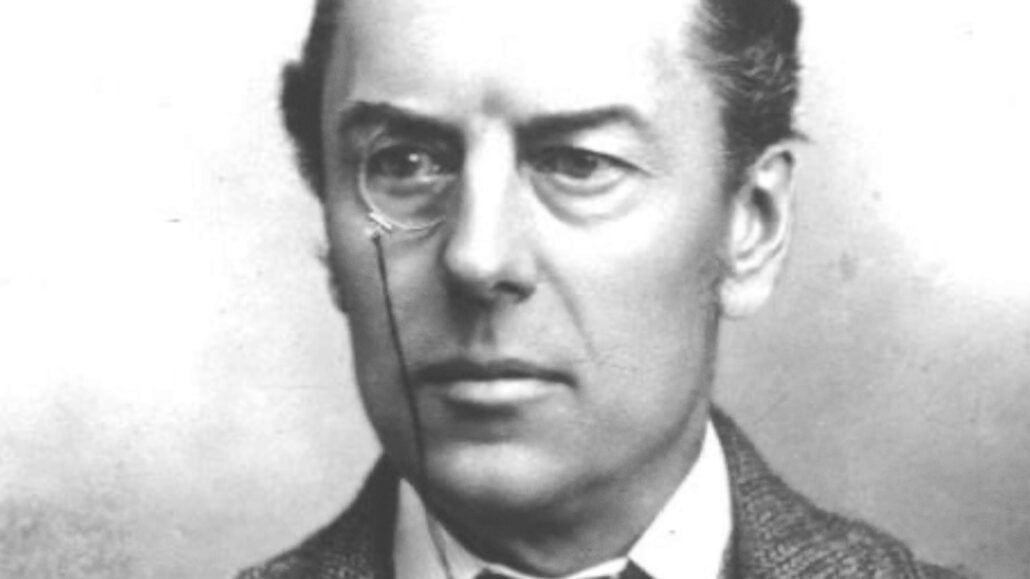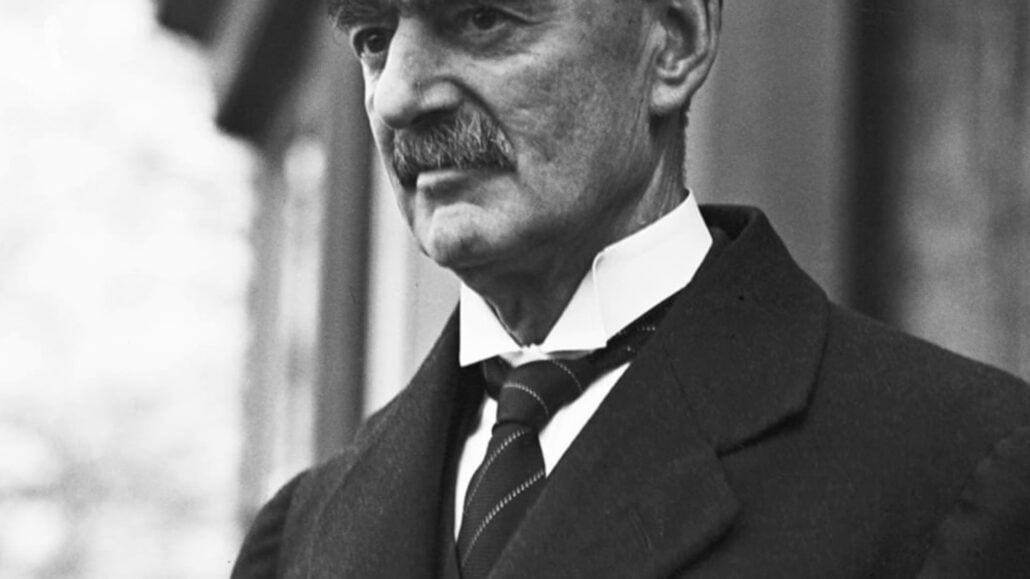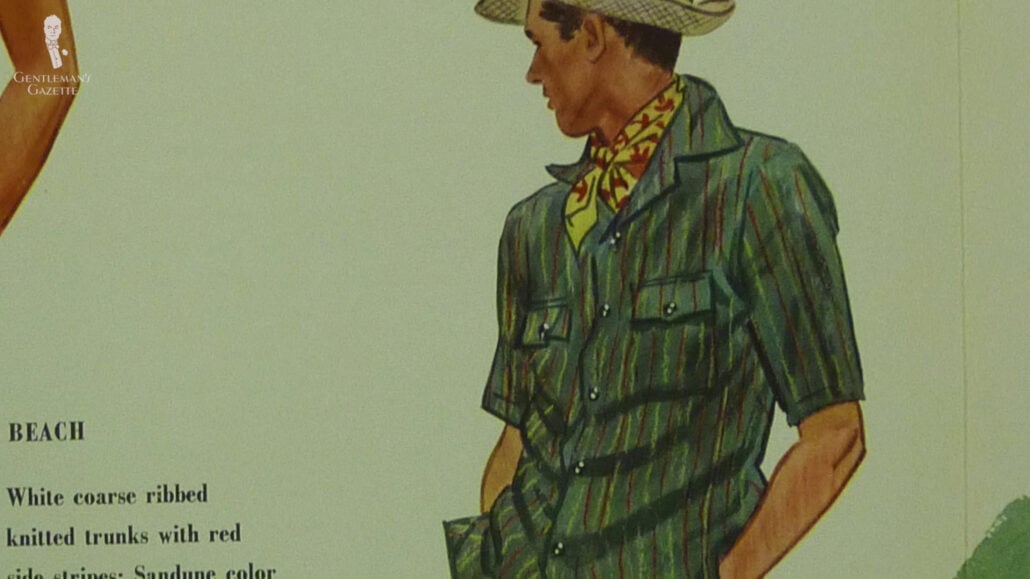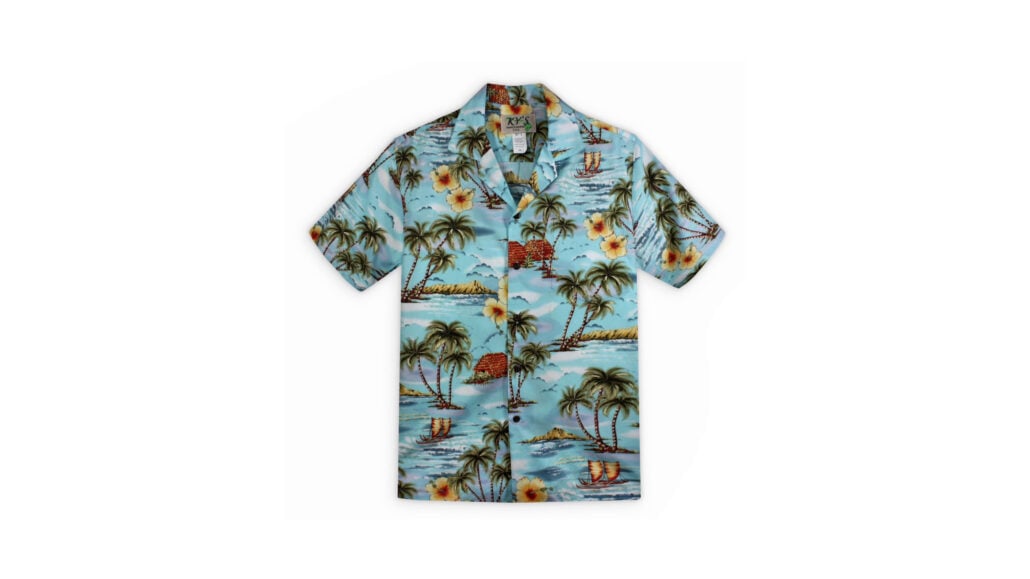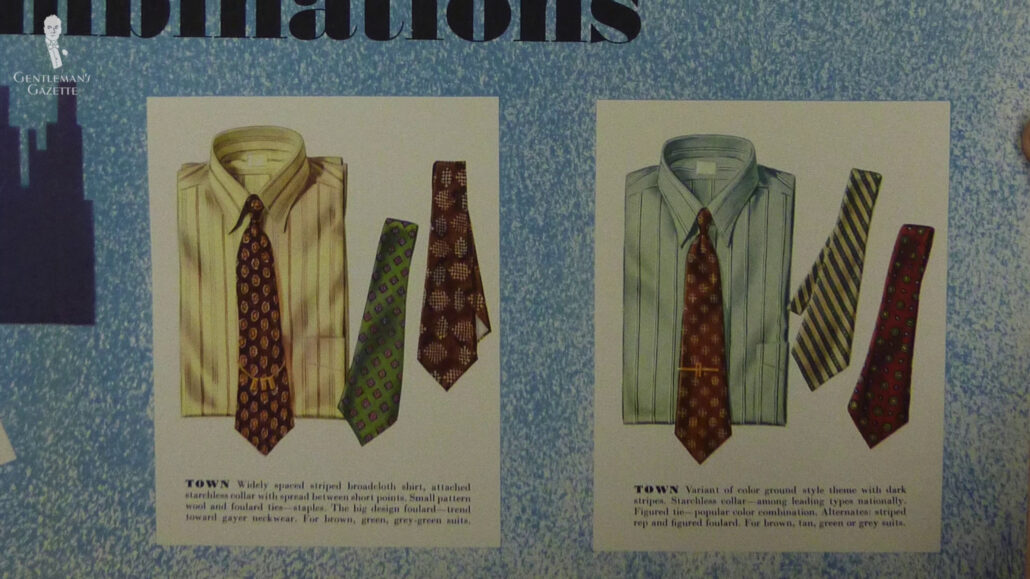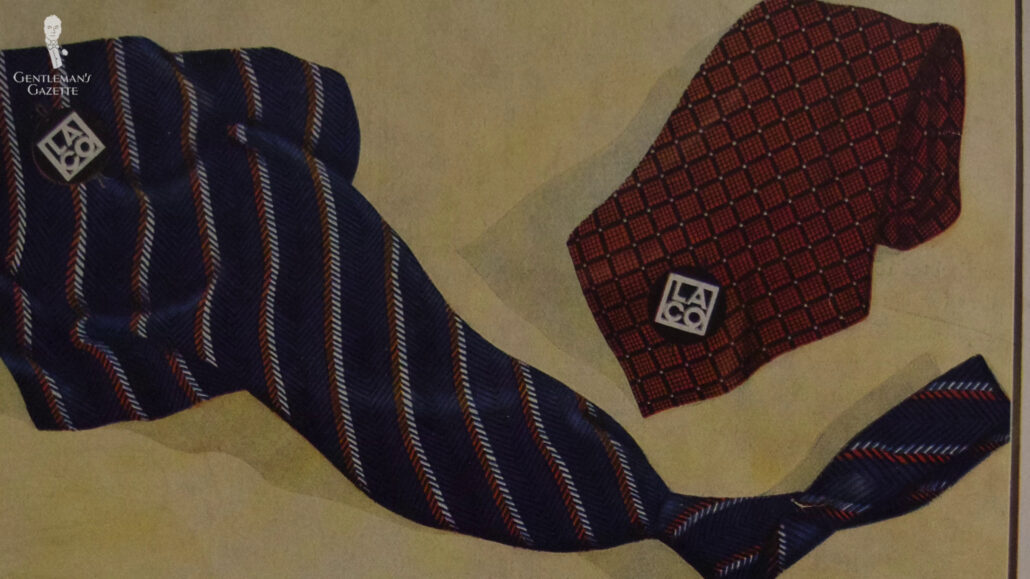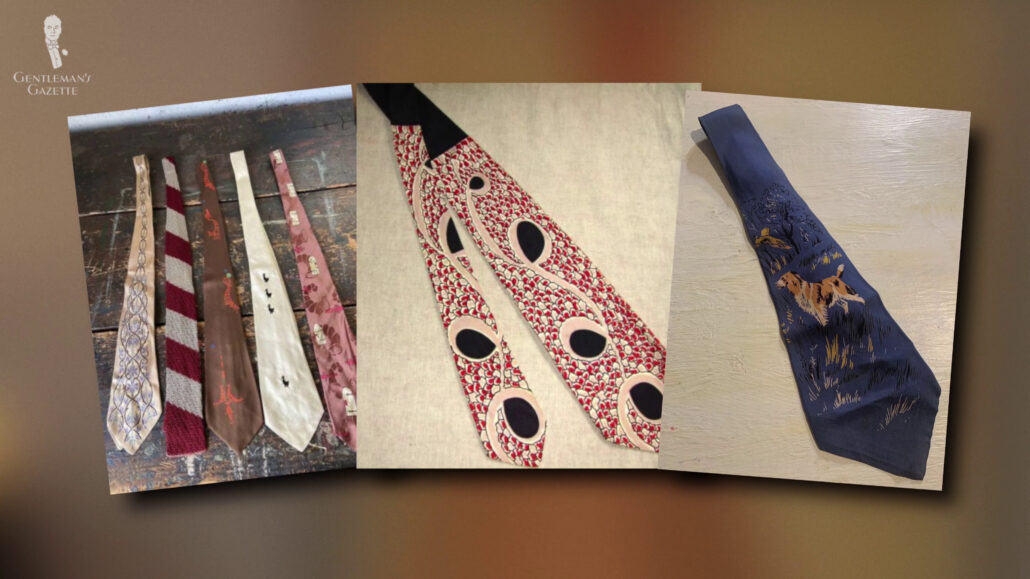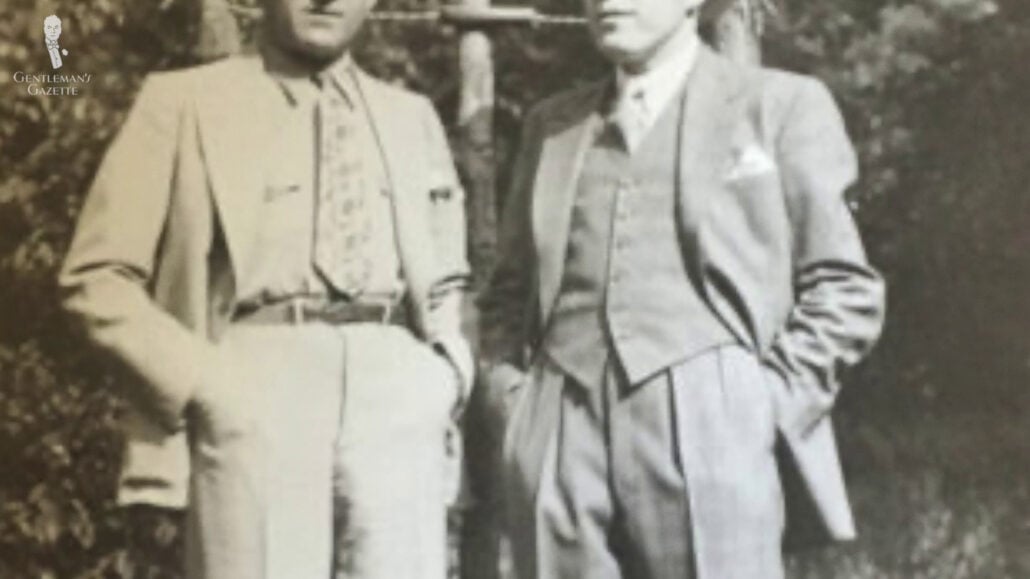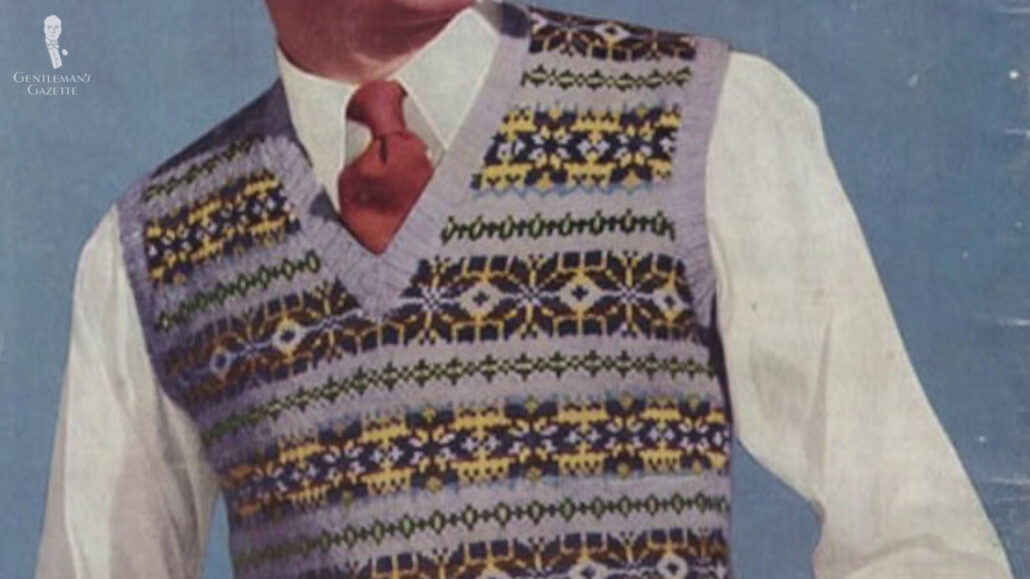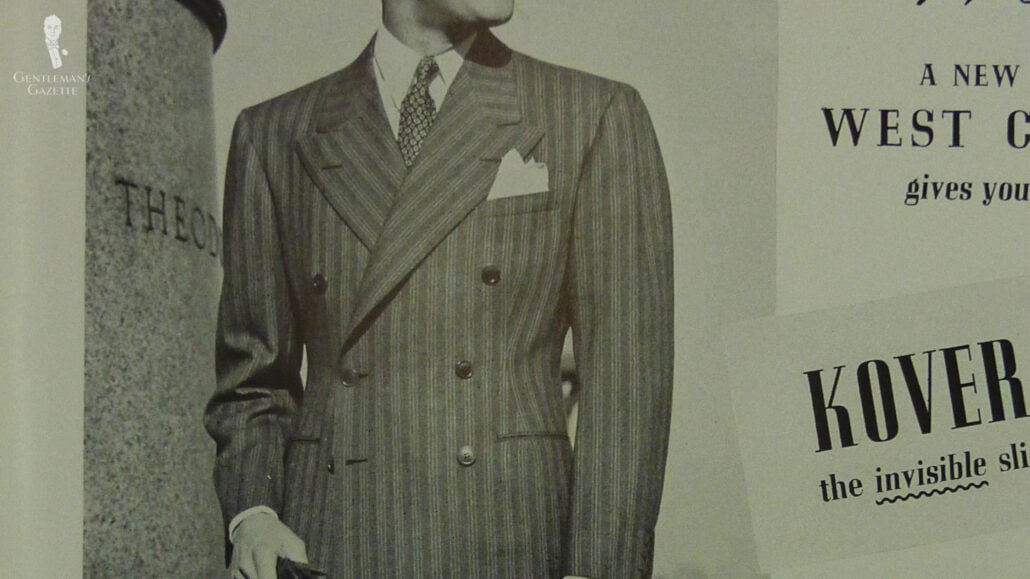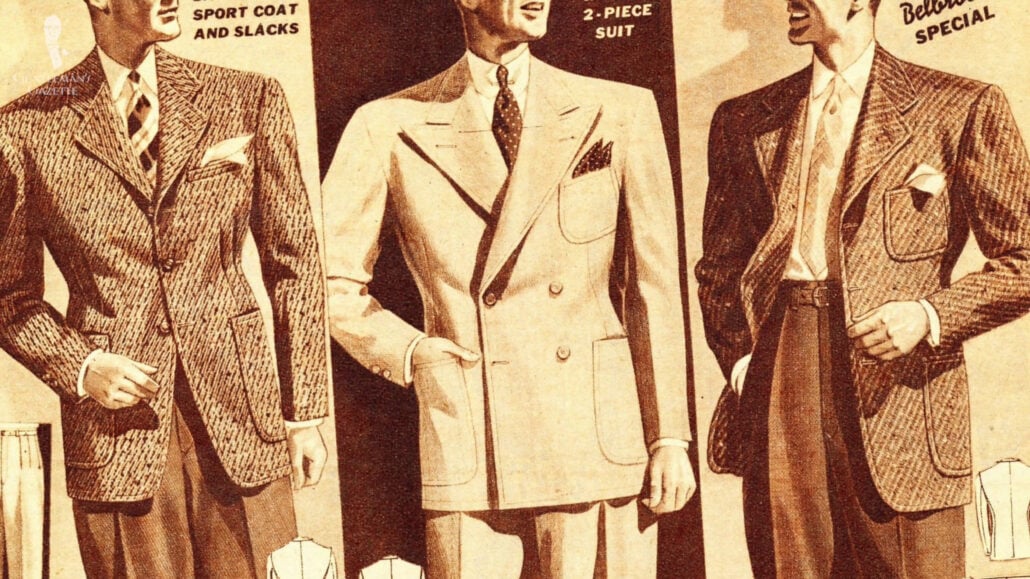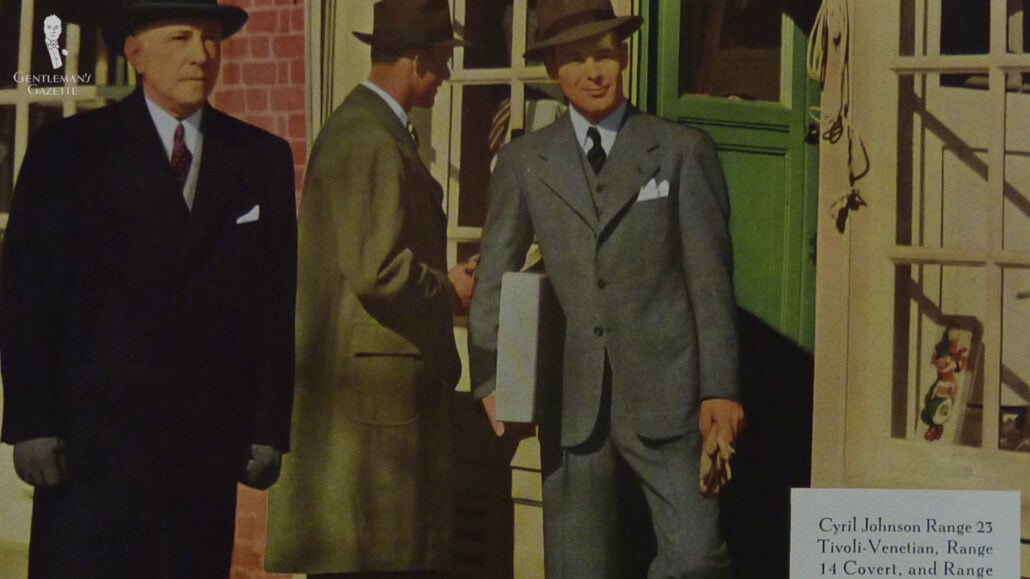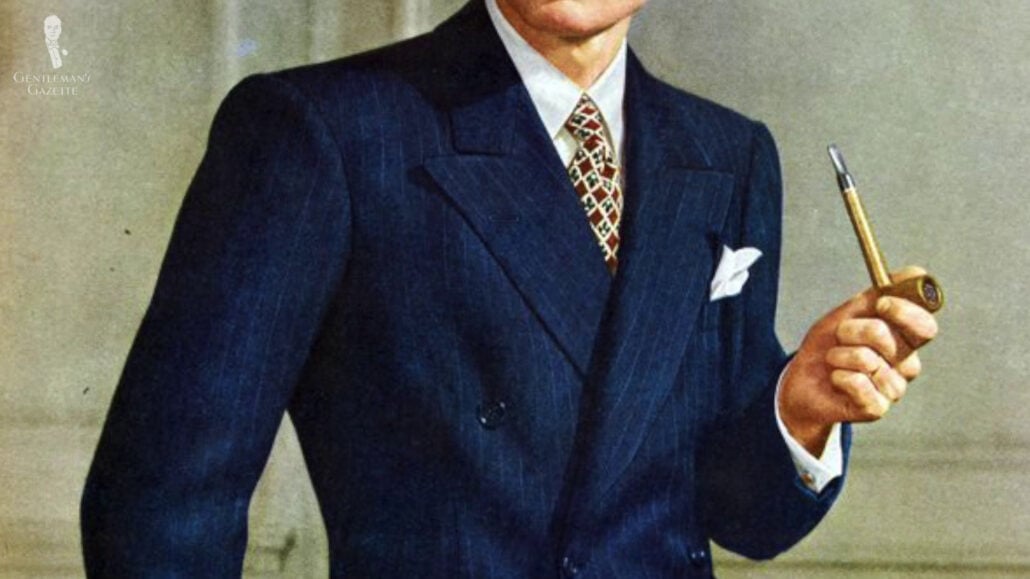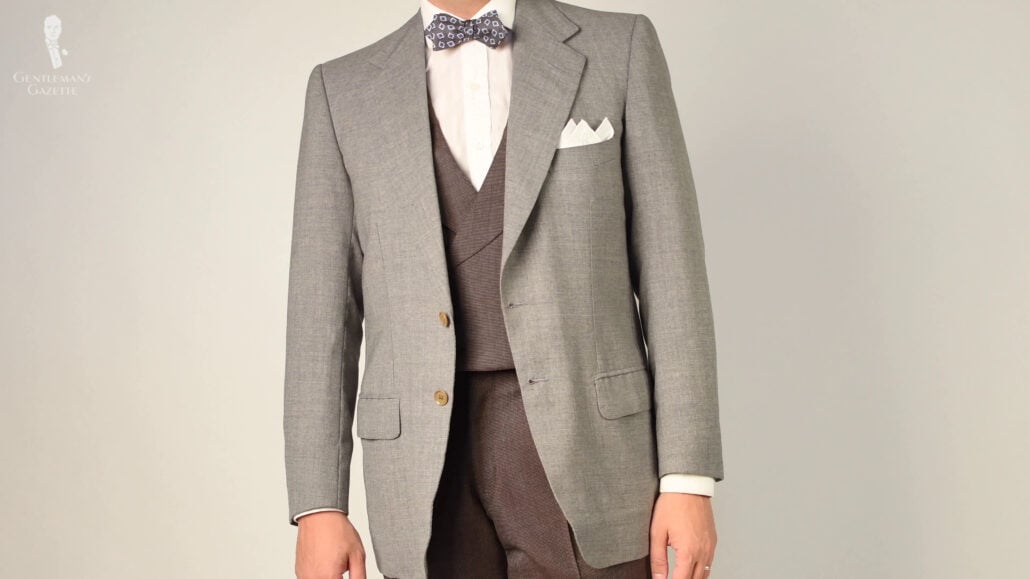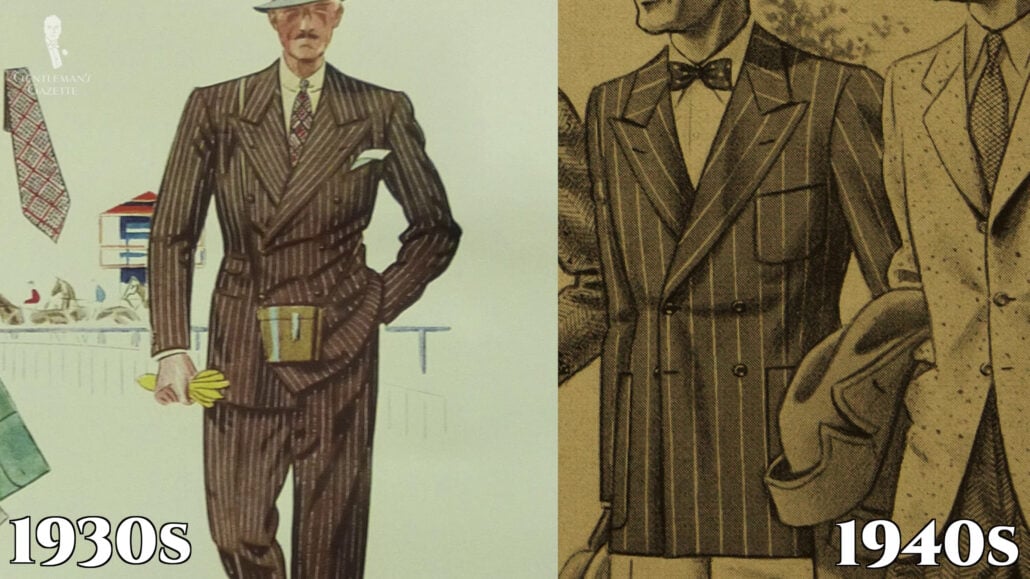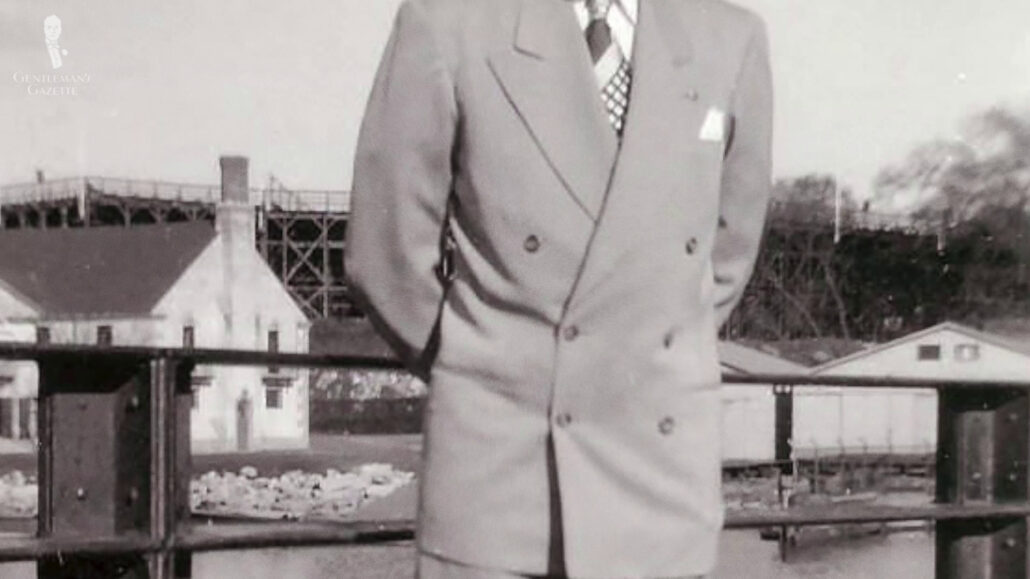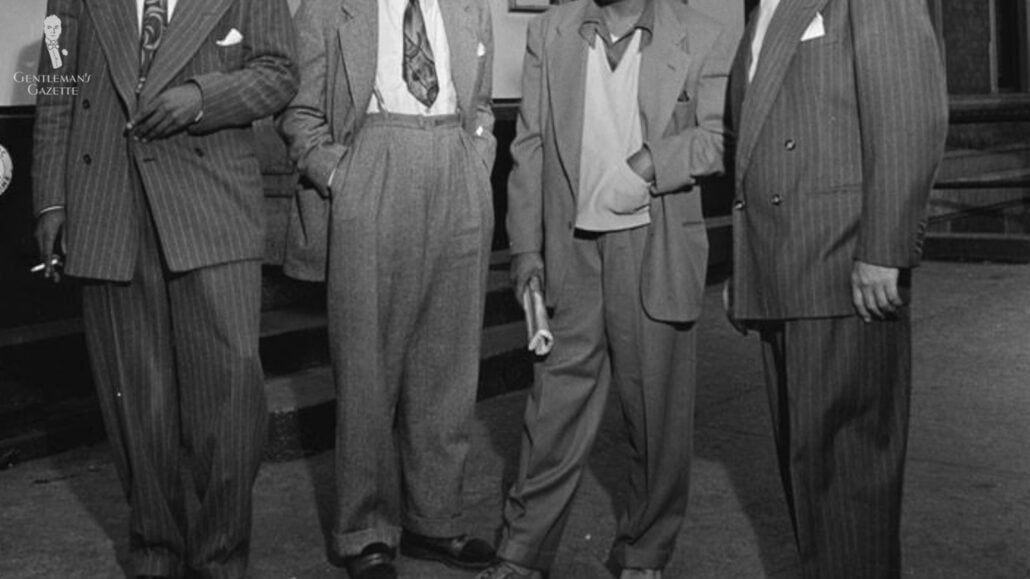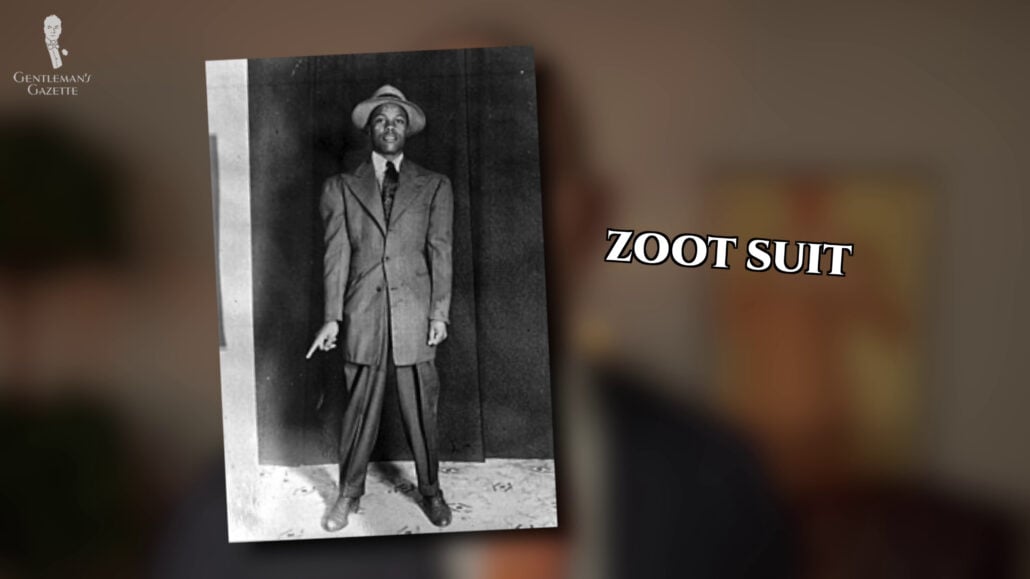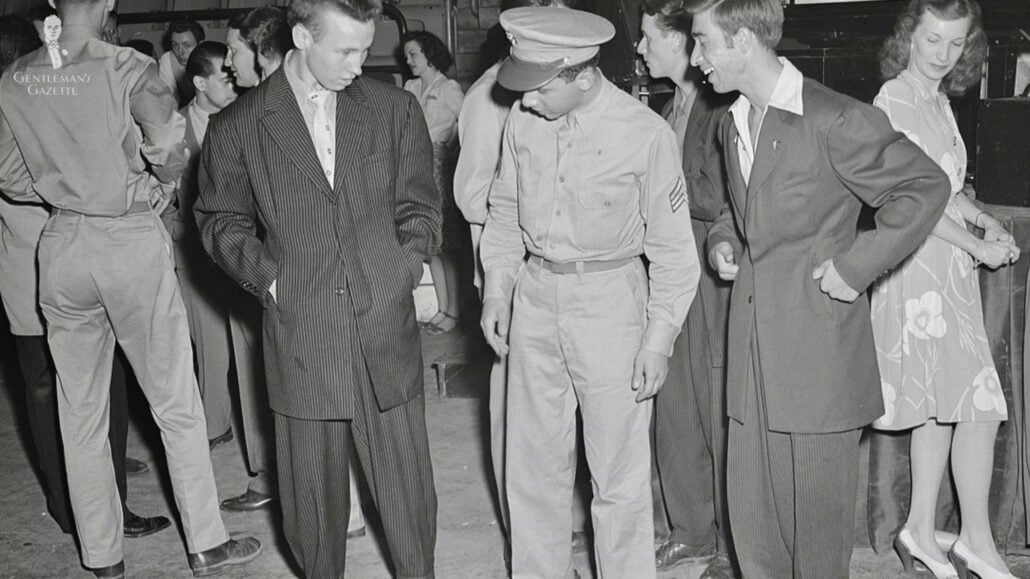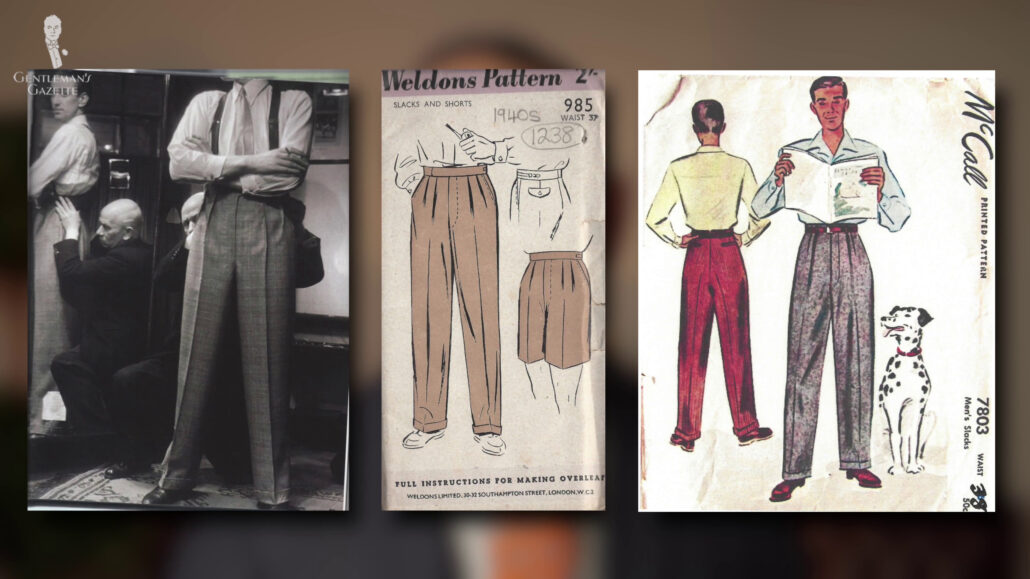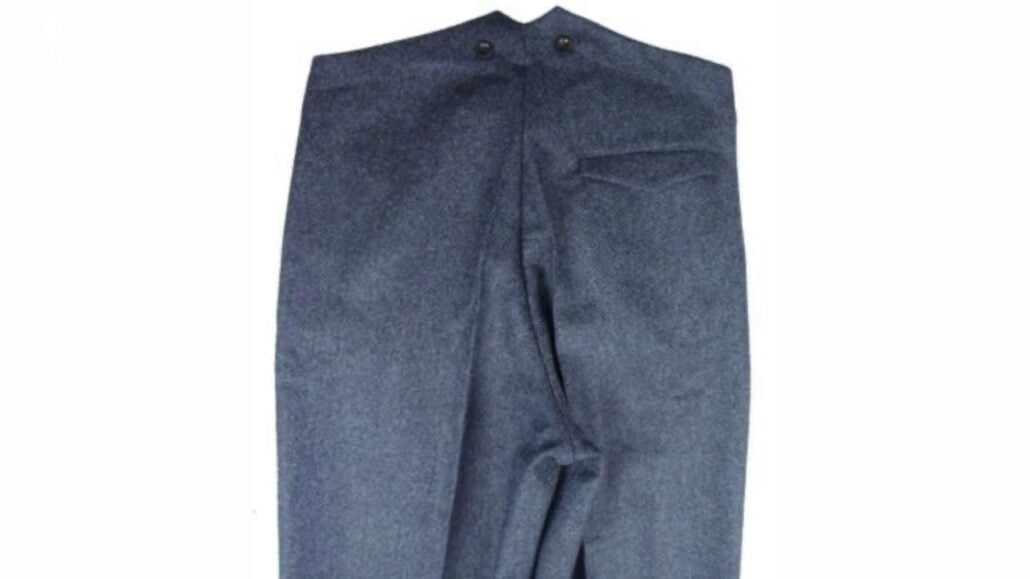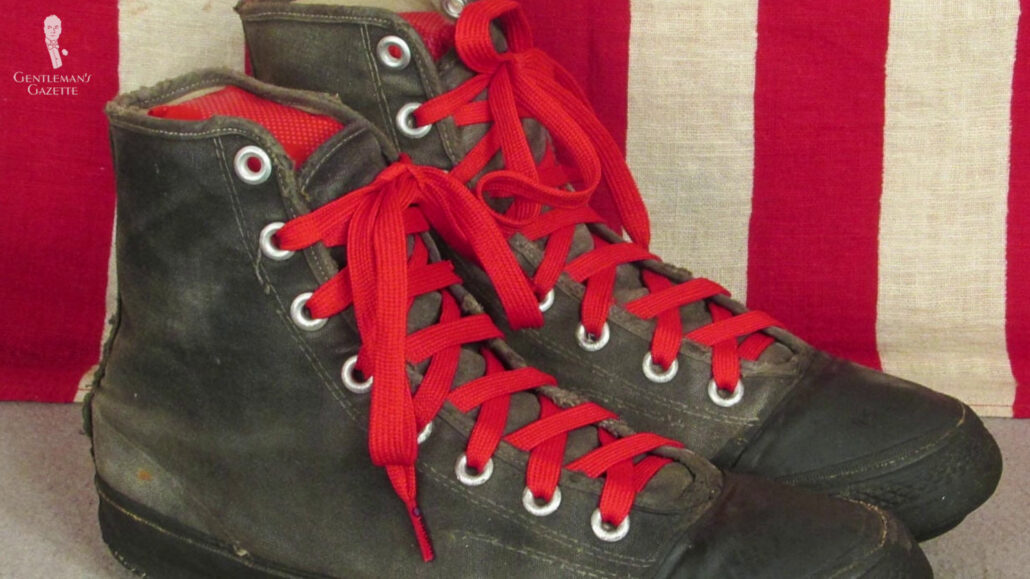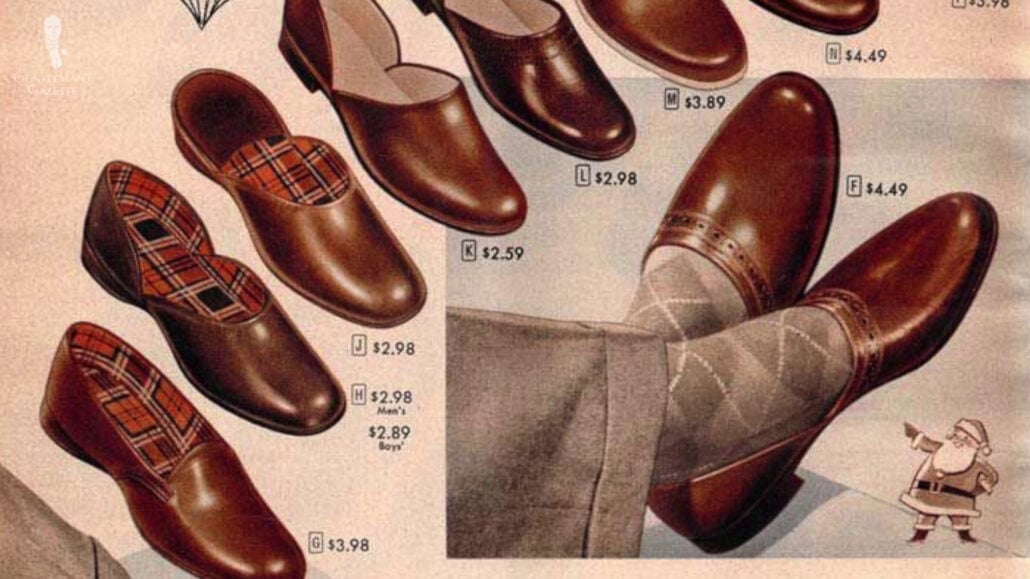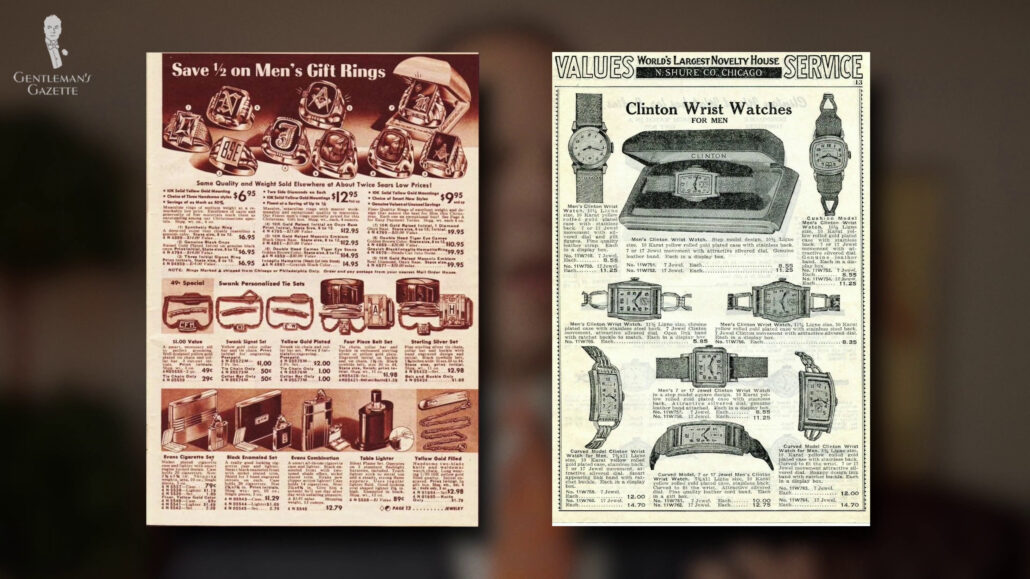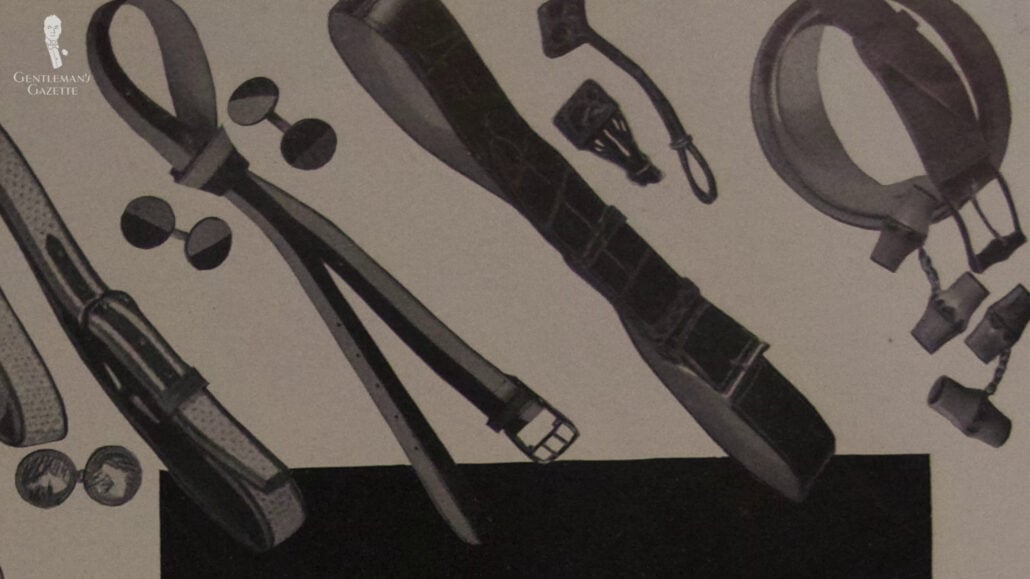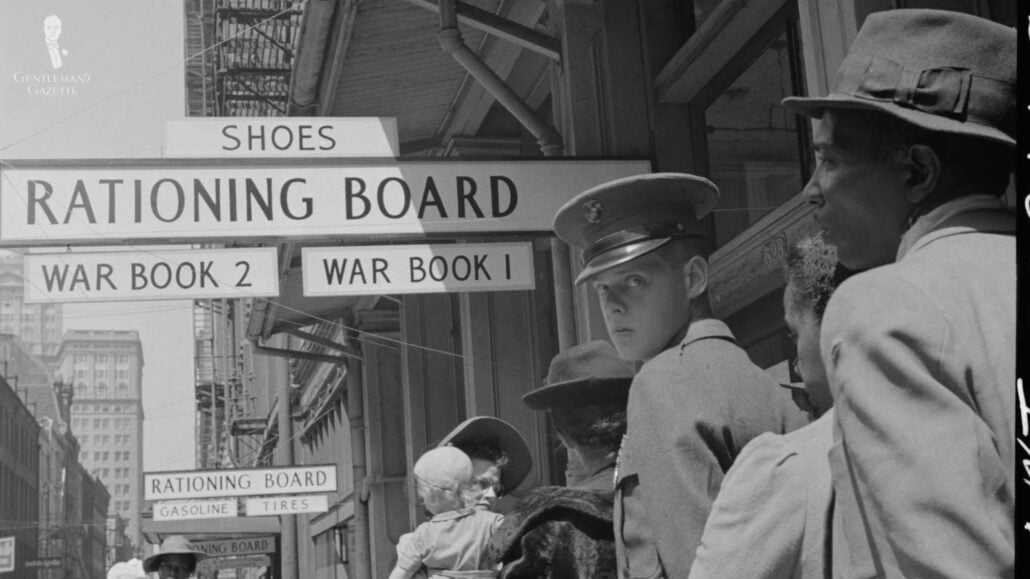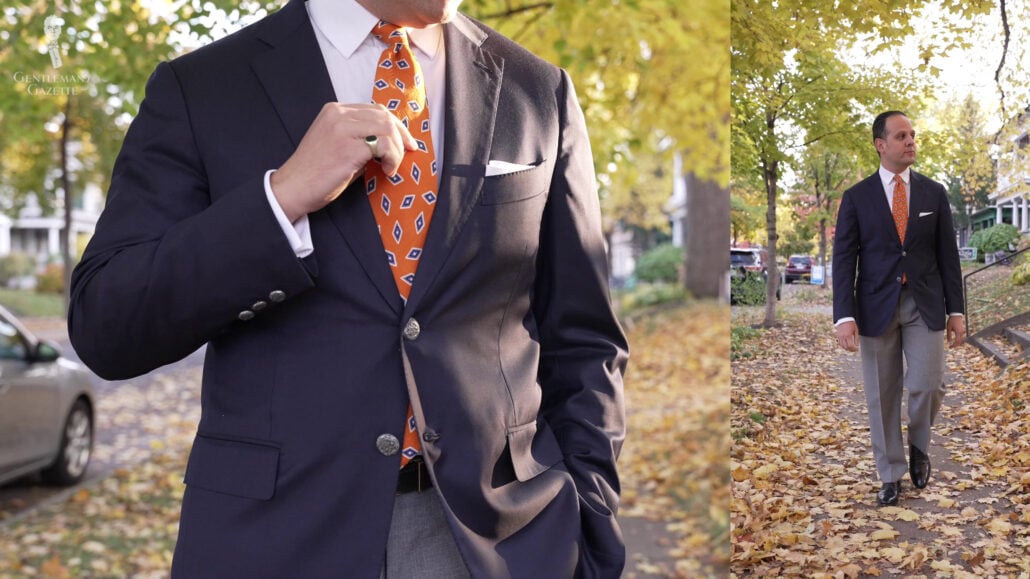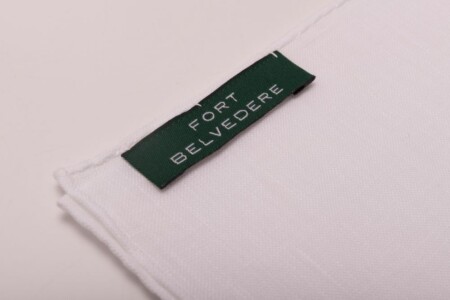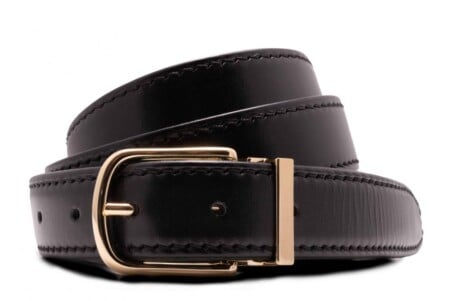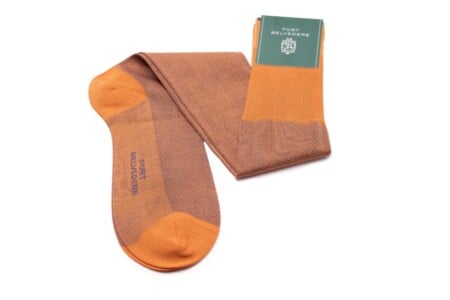The 1940s was an eventful decade in history, not only because of World War II, but also significant changes in technology, pop culture and, society–all of which made a significant impact on clothing. With this said: have movies and TV shows gotten ’40s menswear right?
In the first half of the 1940s, World War II was raging, but even after the war, the impact of such a tragic worldwide event was still being felt and reflected in the clothing men wore.
Rationing meant that fabrics were often unavailable. It also impacted the style of the clothing. There were new laws in the books that meant people couldn’t just wear whatever they wanted and, even if they could buy something, there were limitations on that. Of course, there was also a new social change that transformed menswear.
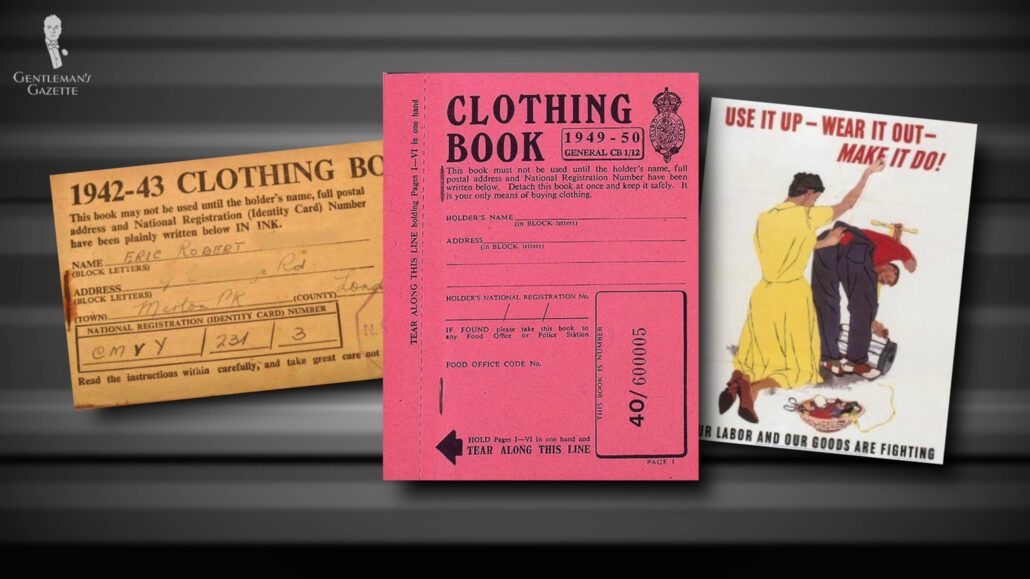
In decades past, high fashion was typically something led by the aristocracy, and the average man would look up to that and wanted to emulate it, but not anymore. With classes intermingling on the battlefield, a cultural shift had set in and the aristocracy wasn’t as highly regarded.
Men now had a new appreciation for life and for freedom, and they just wanted to relax more and be themselves.
In terms of clothing, that meant there was a surge in casual-style garments that weren’t seen before. And, as one might expect in a war period, what you wore also reflected on your patriotism, and so, a lot of what we’ll be talking about here is rationing and the influence of military styles on civilian clothing.
What Men Wore In The 1940s – Hats
We’ll start from the top with hats. There wasn’t really a new style of hat, and the old styles were still around. Think about the Homburg hat, the fedora, the top hat, and even the bowler hat. Of course, the boater, the Panama hat, and the flat cap were all still around in the ’40s.
What was different in the ’40s was the distribution. Top hats were maybe worn in England or by the upper classes or maybe the middle-upper class, but otherwise, the fedora was definitely the most popular hat now, especially in the US.
If you take a closer look at the fedora hat at the time, you can see British hats kept a relatively shorter brim and a stiffer felt versus in the US, where the brim got wider and the felt got softer. If people didn’t wear a fedora, the pork pie hat and the Homburg were also still quite popular.
For example, jazz musician Lester Young was seen sporting a pork pie hat and Winston Churchill a Homburg.
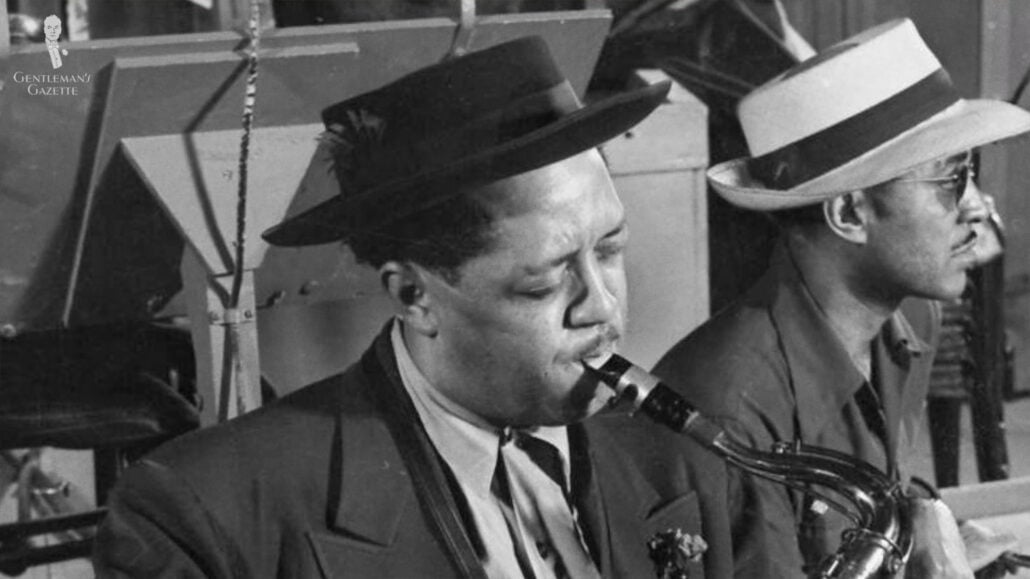
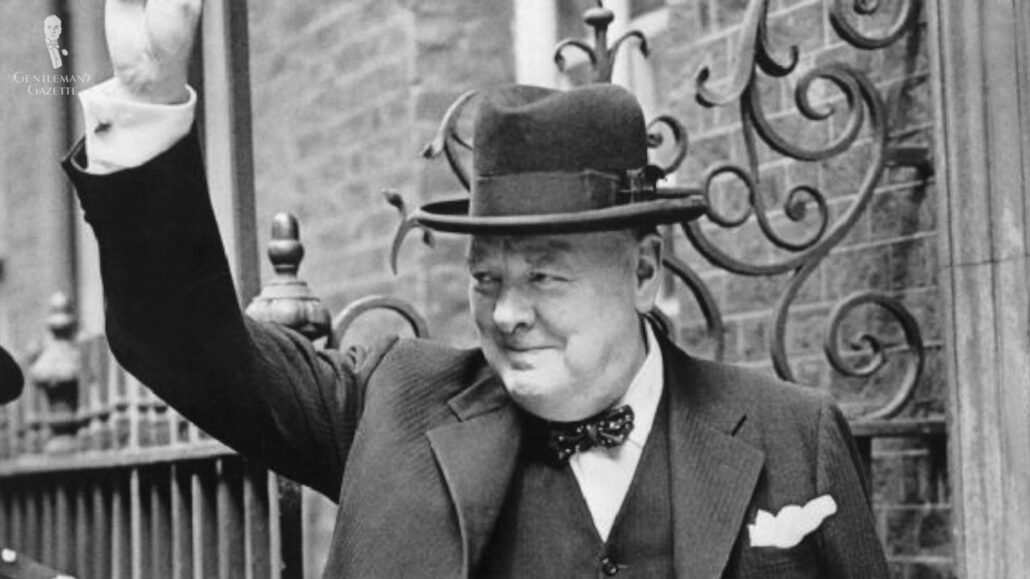
While the hat was still very much a common sight, overall, fewer men wore hats because hairstyles had become more important by now.
Hairstyles and Facial Hair
When it comes to grooming hair and facial hair, 1940s men were very well-groomed. You can see lots of photographs and movies from the time, the haircuts were all slick, glam, and sometimes shiny.
The typical short back and sides with longer hair on top and pomade was definitely a look that was prevalent in the ’30s as well as the ’40s.
Towards the end of the ’40s, hair became more wavy and voluminous. The pompadour hairstyle would become really popular in the ’50s. But, if you look at the late ’40s, you can already see how it started taking shape then.
Much like in the ’30s, smaller moustaches and a clean-shaven hairstyle were popular in the ’40s and mostly older men would wear a beard. Of course, men serving the military had to shave and so, they just continued that habit once they exited the military.
Eyewear
In terms of eyewear and spectacles, the 1940s were very similar to the ’30s. You had rimless versions, you had Bakelite or celluloid frames, and that’s what men often wore. Of course, there were also horn spectacles or wireframe spectacles. Some of them wore the pince-nez, but, typically, those were older gentlemen.
In terms of eyewear shape, the ’40s had more variety. You had a more triangular shape with a dip at the bottom or a more square or rectangular shape. It wasn’t just plain round anymore.
New plastics and lens tinting also meant that people could have different hues in their sunglasses, which was an interesting form of personalization. That option was around before, but it wasn’t as popular until the 1940s.
In the US, aviator glasses became really important because that’s what they wore in the U.S. Army Air Corps. Likewise, browline glasses became popular after their invention in 1947, and they continue to be popular today.
Believe it or not, the monocle was still being worn by some men in the 1940s! Typically, it was associated with men in a higher social position.
During the 1940s, the rimless monocle became incredibly popular in Germany with movie stars, the elite, and officers. It’s said that that was an attempt to imitate British officers who had the round gold-rimmed eyeglass or monocle. Thanks to the association with high-ranking Nazis, the 1940s were pretty much the decade that killed the monocle.
An interesting note here, though, our scriptwriter and history buff, Aaron White, still wears a monocle on a daily basis! He even shows how he wears it on his channel.
Shirts
In terms of shirts, formal dress shirts were still the norm, and while older men would typically wear a separate stiff collar, the soft collared shirts had also become more popular, especially in the United States.
In the earlier half of the 1940s, very long collar tips, also called “spear points,” were rather popular. Then, as a decade progressed, the collar points became shorter.
If the collars weren’t buttoned down or being worn with a collar clip or a collar pin, they typically had collar stays that were removable and ensured a clean-looking collar. Because of that, starching was no longer a requirement.
Another somewhat more obscure type of collar was the Trubenized collar, which was also popular in the 1940s. Trubenising was basically a process where the fabric was fused with acetate on the back.
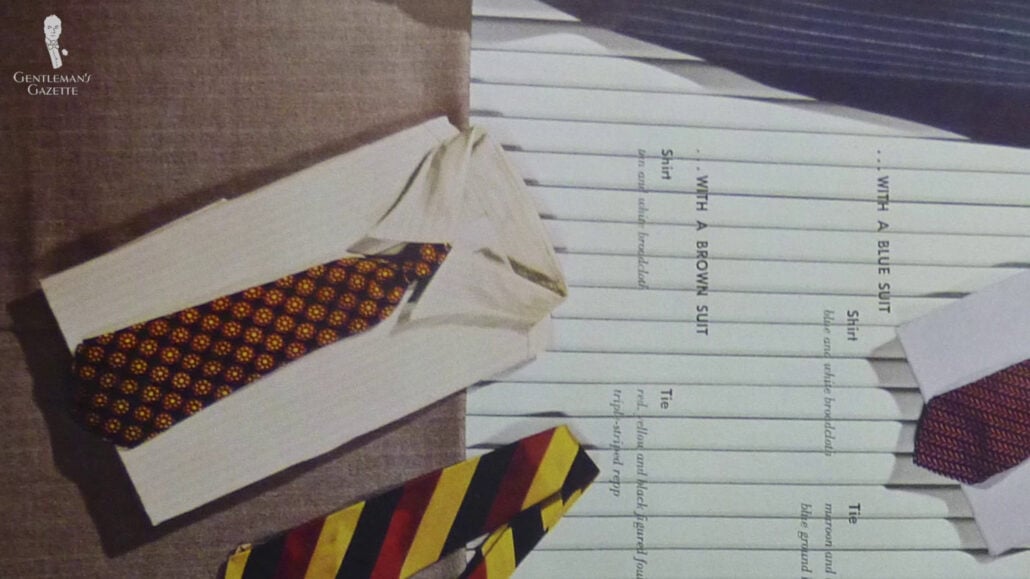
It was patented in the 1930s in the US, and it just gave you that clean look without actually having to starch the collar. It also meant that you didn’t need a collar clip anymore or a button-down collar to keep things looking neat.
In the UK, in the House of Commons in 1945, there was even a discussion if demobilized men should be given tab collars or Trubenised collars, so it was easier for them to look the part. Frankly, I doubt many of the older politicians even had a clue what Trubenised collars actually were!
Shirts & Fabric Rationing
The rationing of fabric actually had a great impact on the design of dress shirts as we know them today. If you look at the 1900s, dress shirts were cut very roomy and much longer, sometimes reaching all the way down to your knee.
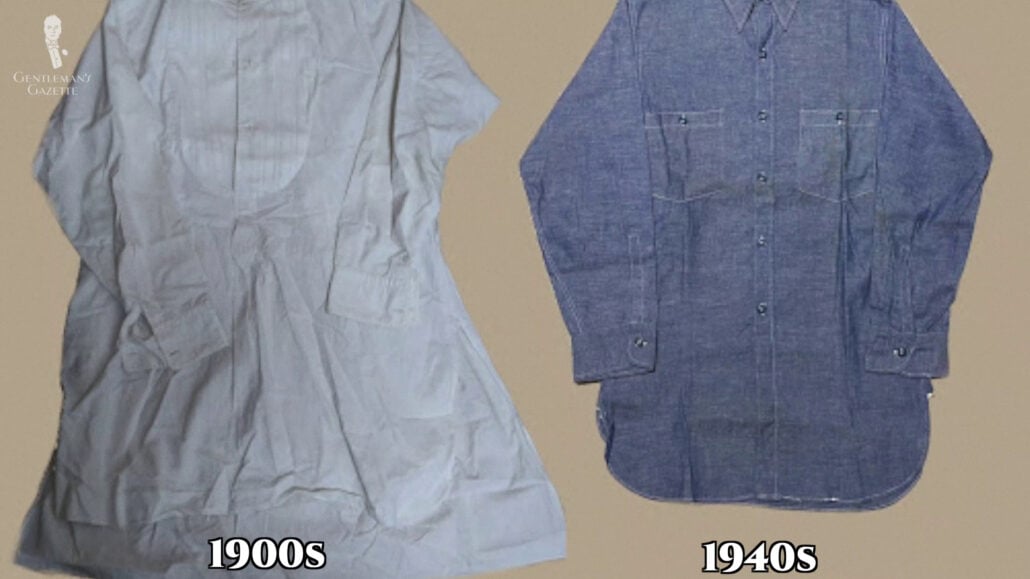
Now, with limited fabric supply, the shirt became a bit trimmer and much shorter, ending somewhere around your upper thigh area. Of course, in the same vein, French cuffs were now forbidden because single cuffs did the same job and required less fabric.
Striped shirts are very popular with the common man. With the advancement in technology, you also have block patterns or small micropatterns. Even dotted shirts would be something men would wear.
Apart from the formal dress shirts, casual shirts really became big in the 1940s, there were many types, different patterns, and colors, but the “camp” style collar is definitely something we owe to the 1940s.
The “camp” collar is a soft unstarched collar that doesn’t have a stand. It’s meant to be worn unbuttoned. You can typically find it on casual shirts. It was also popular in the ’70s, and you can see them again now when men want to be casual with their printed Hawaiian shirts for example.
Speaking of Hawaiian shirts, they were brought back to the mainland US. by the GIs. In 1947, the Hawaiian Chamber of Commerce introduced Aloha Week. That meant that men were encouraged to wear aloha shirts instead of suits to the office. Later, it became Aloha Friday and then Casual Friday.
Neckwear (Ties & Bow Ties)
Even with all the casual shirts around, men still wore neckwear, though not so with those casual shirts, and more with formal dress shirts.
That being said, there were also more leisurely shirts that allowed for a tie. Of course, there also was a shortage of silk, so ties were impacted by that and different materials became popular, such as wool, cotton, and rayon.
Many of these ties were pretty bold with geometric patterns, crazy spirals, or interesting color combinations.
Ties also became thinner and shorter. On average, a tie was about 10 inches or 25 centimeters shorter than ties are today. After the war was over, ties became a lot wider, up to five inches or twelve and a half centimeters in width.
Custom handpainted ties with your hobbies, such as fish or maybe an attractive woman or other things in your life became popular, and even though they’ve been around since the ’20s, the ’40s was really the time when those kinds of ties took off.
Frankly, most of these ties are too outlandish for my taste, but each to his own. It was basically an opportunity for men to express themselves and add their club insignia, maybe their university, or just personalize something about them and manifest it in their neckwear.
Those bold kinds of designs were also reflected in the pocket squares, which were, likewise, very outlandish.
Even though bow ties were still around and you’d wear them for Black Tie, overall, the necktie was quite a bit more popular than bow ties.
Waistcoats (Vests)
Waistcoats of the 1940s were very similar to 1930s vests in the sense that they had V-neckline and pointed tips at the bottom for the single-breasted version, and single-breasted waistcoats were by far more popular than double-breasted ones.
Typically, they’d have six buttons and they would have three or four pockets. Of course, many men also went without waistcoats because they were no longer necessary at the office and, of course, there was rationing, so it was easy to skip the waistcoat.
Before the popularization of central heating, men would sometimes even wear a waistcoat underneath a double-breasted suit. But, in the 1940s, that time was pretty much over and you no longer wore waistcoats with a double-breasted suit.
Instead of a vest, some people also decided to wear a jumper (sweater) or a knit vest, which became popular in the ’40s. Fair Isle or cool, unusual knit patterns were popular then.
Suits & Odd Jackets
Typically, the jacket or suit colors were more somber, including black, dark, gray, charcoal, brown, navy, and so forth. Herringbone tweeds, such as Donegal overplaids, and checks, just the typical classical pattern you know today, were also around then.
They had lots of interesting stripes though, such as pinstripes or chalk stripes, and, sometimes, different double stripes were also really popular.
Of course, jackets were also hit by the fabric rationing in the UK and there were austerity regulations about the jacket in the US From 1942 onwards, in the US, jackets could no longer have flaps. So, you had jetted pockets or patch pockets instead, in order to save fabric.
So, if you flip through old catalogs from the era, you can still see some models with flaps.
In the UK, things were a bit stricter. Starting in 1941, belted backs, pleated backs, half-belt bags, zips, and double-breasted jackets were altogether banned. Suits were limited to having three pockets and they needed moderately sized lapel widths. So, you couldn’t have these typically wide, ’30s-style lapels.
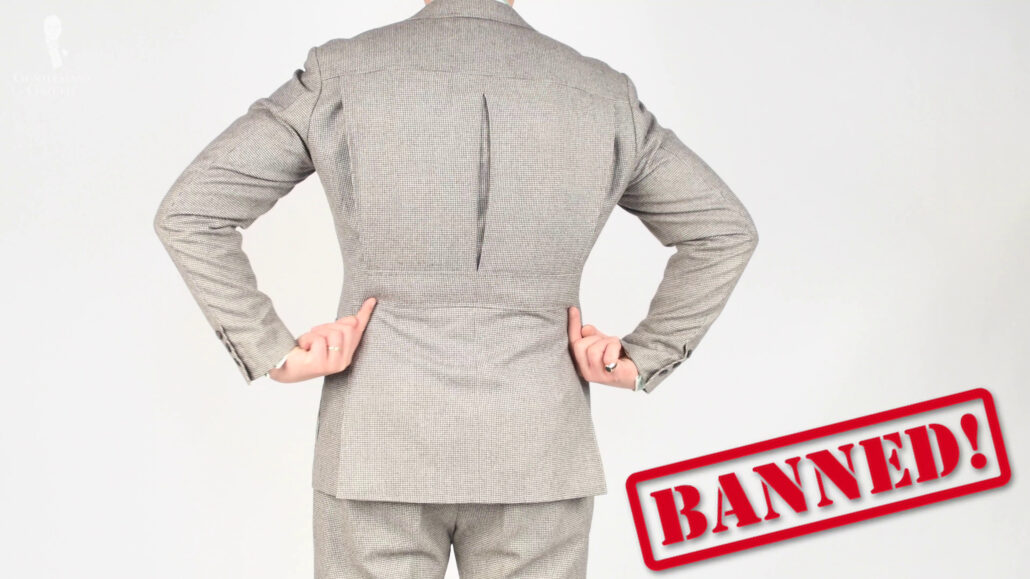
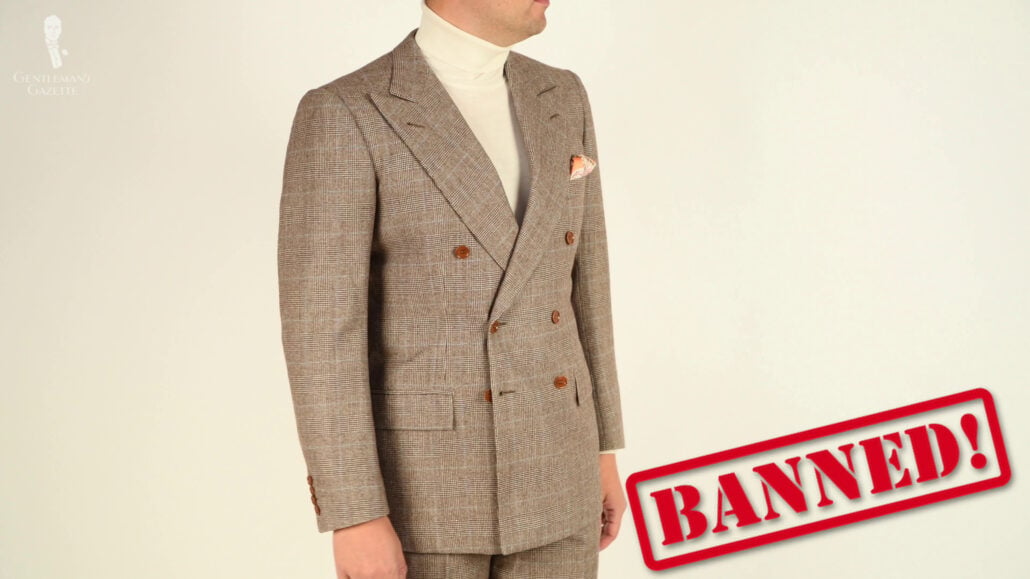
As most of the wool fabric was used for military uniforms at the time, civilian clothing was typically made out of a blend of wool and rayon.
In terms of the jacket silhouette, it was overall boxier than a suit today. It had shoulder padding, which created a broader manly look and the waist was also more boxy, the interlining was stiffer, the fabrics were heavier, and it had a certain presence.
Whereas today, jackets are often lightweight, they don’t have shoulder pads, and just a very different structure. It’s now all about softness. Back then, it was much more structured and stiff inspired by the military uniforms, which also had that going for them.
If you go through pictures of the 1940s, you sometimes see men wearing suits that look distinctly 1930s. Well, that was because it was considered to be patriotic to wear your old suits rather than using new material for the new style.
In that same vein, many men now didn’t just wear a suit, but they combined their suit jackets with different trousers. And so, the odd jacket combination outfit became more popular in the ’40s.
Obviously, the advantages were two-fold. On the one hand, you were supporting the war effort and, on the other, you had more options with your limited amount of clothing because, if you had three jackets and three pants, that was already nine different outfits.
If you’re interested in how you can put together very interesting-looking combinations with what you already have in your wardrobe, it’s worth checking out the spezzato style.
For that reason, the sport coat as you know it today with the pattern was popularized in the 1940s. Yes, you had a navy blazer, but you also had a bold houndstooth jacket or maybe a windowpane one.
Overall, jackets were also relatively short compared to the previous decade and, later on in the ’40s, when rationing disappeared, the jackets became longer again and a little wider because now designers and tailors could do the things they wanted to without any limitations from the outside.
In the US, double-breasted suits weren’t outlawed and, towards the latter part of the decade, you could see a lot of men wearing double-breasted suits. Typically, they had wide shoulders with padding and a rather boxy cut. At least, that’s what a ’40s double-breasted suit is known for today.
Typically, you had a six-by-two button configuration, which means you had six overall buttons with the top row being wider stance and then, two rows at the bottom that would be buttoned. Sometimes, the top row buttons all disappeared. So, you had a four-by-two double-breasted coat.
The gorge of those jackets was at about the same height as it was in the ’30s, which is much lower than what you see today. That being said, 1940s double-breasted jackets have a very distinct look that was very different from the 1920s, for example.
Trousers (And A Word About Zoot Suits)
When talking about 1940s trousers, we have to bring up the austerity regulations first. The opening couldn’t be wider than 19 inches doubled up, which is nine and a half inches measured flat or about 24 centimeters.
These rules were ignored by some youth of the era and, even though they came from many backgrounds, many of them came from Black, Filipino, or Mexican communities. They were the so-called “zoot suits,” which was an oversized jacket that was cut extremely full. It was very long and, likewise, the trousers were also very full cut, and, because of that, they used up a lot of fabric.
There were many who considered those zoot suits to be unpatriotic because of this excess fabric that was used to make them.
For many young men who felt alienated by the mainstream in the US, this kind of zoot suit gave them the ability to express their disdain for conventional American society and their marginalized status within it.
In other words, this was a revolt against the established order using the zoot suit as a symbol for self-determination and pride. It definitely inspired sub- and counter-cultures that were to come in later decades.
This defiant sartorial stance, in combination with the ubiquitous racism of the era, led to the Zoot Suit Riots in 1943. Of course, there’s a lot more history to zoot suits and we believe it warrants its own post. So, stay tuned for that.
In the UK, trousers had similar restrictions in the US and, to get around that, men would buy longer trousers and just had them hemmed at home. Zippers and elastic waistbands were also banned by the mid-to-late-1940s. Double-pleated trousers were in style. The flat front trouser was still around, but not as popular anymore.
If we look at the illustrations and photos of the era, it looks like most pleats faced inward. But, this time, most trousers were straight wasted and had belt loops.
In the UK, fishtails for braces or suspenders could still be found. In the US, the belt had taken over. Overall, the rise of trousers was much higher and pants were cut much fuller. After the war was over, a cuff about two inches or five centimeters was the fashion.
Another defining feature of the 1940s is the so-called “Hollywood waistband,” which we cover in more detail in our 1930s guide. Basically, a Hollywood waistband doesn’t have a true waistband and the belt loops are sometimes set down about an inch or two centimeters to create a very different look from a trouser with waistbands.
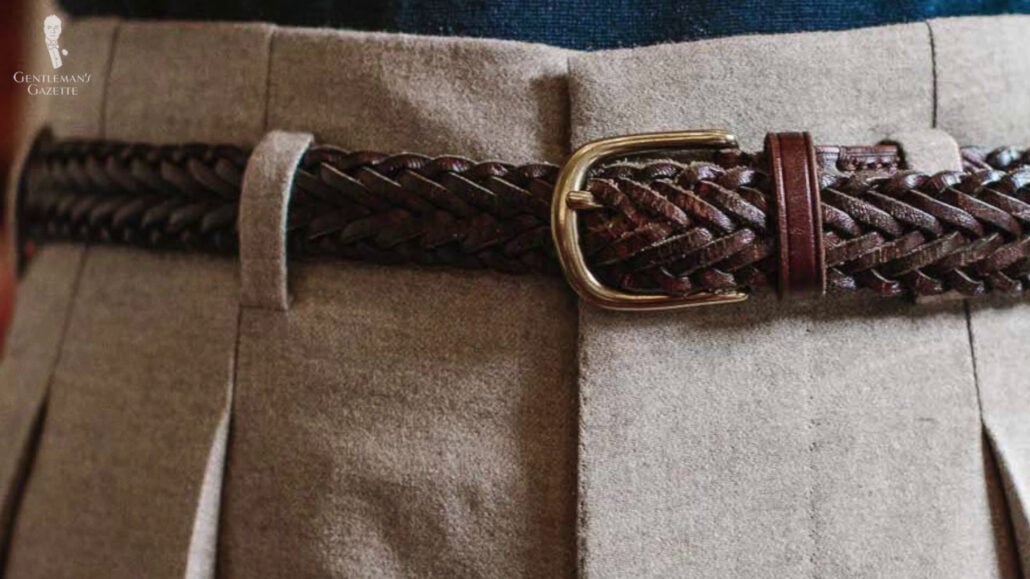
Footwear: Also Rationed
In terms of footwear, you can probably guess by now that those were also rationed. As leather and rubber were in high demand for the war effort, people actually had coupons that they needed in order to buy a pair of shoes.
To combat this, many people bought secondhand shoes and so, you could see lots of 1920s and ’30s style shoes or boots being worn by men in the 1940s.
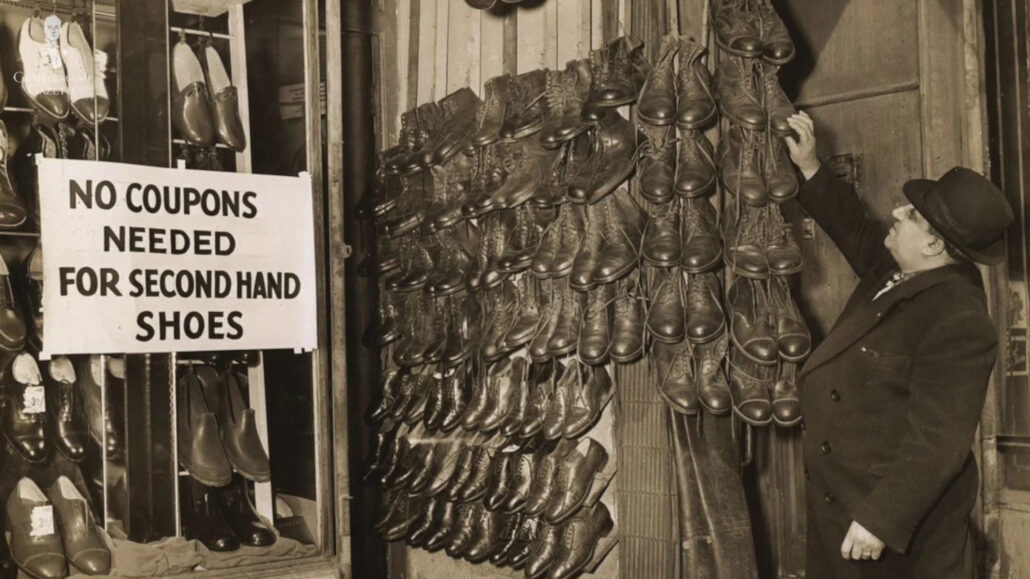
If you were lucky enough to get your hands on a pair of new shoes, the styles were very similar to the 1930s. That meant the toe shape was somewhat pointed but rounded. The arc of the shoes was typically higher and so was the heel.
Brogued two-tone Oxfords in gray, black, brown, and white were quite popular. Even though a lot more men in the 1940s wore two-tone spectator shoes, there were also plenty of men who wore plain black or brown shoes.
Inspired by the war and the utilitarian mindset, more men had also turned to boots again rather than shoes.
Shoes that were previously only worn for sporting, such as the Converse Chuck Taylor All-stars, now also were worn by men in a more casual nature outside of sports. These weren’t worn with suits like some men do today. They were still reserved for very, very casual outings.
Once shoes became more available again, men liked loafers and slippers as they were more comfortable. They were also used for house shoes at homemade of kidskin leather or deer leather because they were soft, comfy, and easy to put on (unlike a pair of boots).
Accessories (Tobacco Products, Watches, Jewelry & More)
In terms of accessories, smoking was still very prevalent in the 1940s and so, men could have their tobacco, their pipe, their cigar case, or anything else related to smoking.
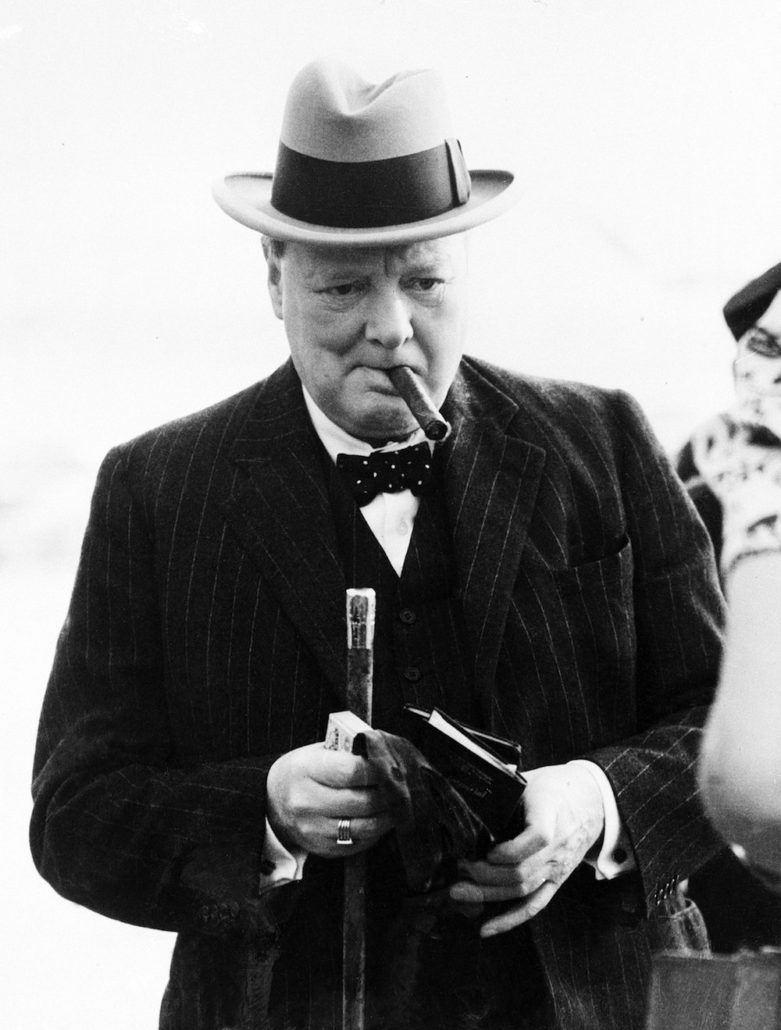
Wristwatches had taken over from the pocket watch and were the norm these days especially in the US. Pocket watches were typically worn only by older men.
In fact, after the war, spending money on jewelry and accessories was considered to be patriotic because it was supporting the economy.
Because of that, many men could be seen with bold wristwatches or rings or cufflinks, or other jewelry. Sets with flasks and tie bars, for example, were popular.
That being said, leather gloves and scarves were also still widely worn. Overall, scarves in the ’40s had more colors than a typical scarf today, with small paisley patterns, different colored fringes, and they were quite dapper.
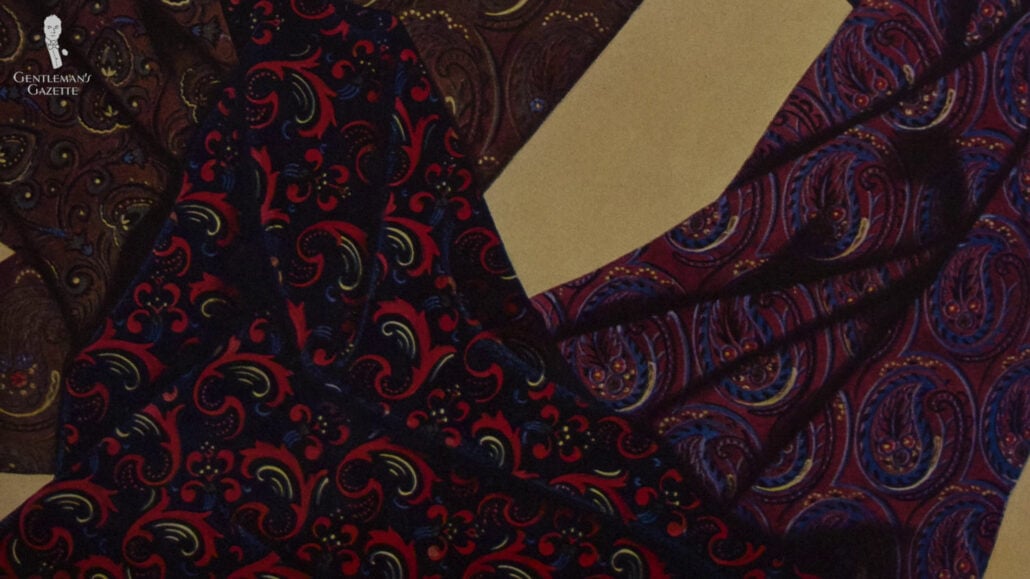
While braces or suspenders were still being worn by a few select old men, the belt really had cemented its position as the number one pants accessory for men.
Eventually, that would feed into a cowboy fad, where men inspired by watching Western movies would pick up Western clothes elements in their everyday wardrobe.
Conclusion
In a nutshell, what you saw in the 1940s was definitely different and more progressive than what had been around previously. Because of the war, the austerity regulations, and rationing, you definitely had an impact on the style of the era.
Also, I’d say the quality of the materials at the time wasn’t the highest. What men really were then was often not a true representation of what was produced in the 1940s, because of the emphasis on secondhand clothing to support the war effort.
Outfit Rundown
In today’s video, I’m not wearing a 1940s outfit because I don’t have many 1940s suits. Instead, I chose a modern blazer that had somewhat slimmer lapels. It doesn’t have the typical strong shoulder padding, but, overall, the navy blazer was still something that you could find in the 1940s.
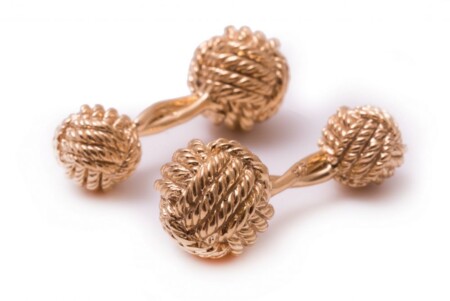
Fort Belvedere
Monkey Fist Knot Cufflinks – Vermeil Sterling Silver Yellow Gold Plated – Fort Belvedere
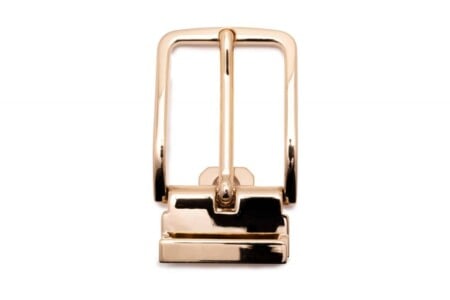
Fort Belvedere
Neville Gold Solid Brass Belt Buckle Soft Corner Rectangle with Gold Plating Hypoallergenic Nickel Free – Fort Belvedere
My pants are cut a bit trimmer, they don’t have cuffs, and they’re gray and they’re in line with what men could have worn. My shirt is white. It has a collar that is not too spread. It doesn’t have a spear point collar, but it’s a very classy collar. My tie is very 1940s-inspired. It has these bold patterns. It is printed on silk, but the silk is also woven. It’s just something that I thought was fun.
My pocket square is a plain white pocket square that is linen. It’s from Fort Belvedere and you can find it in our shop, just like my orange and blue socks. And no, that’s not something men would have worn in the 1940s, but with this tie, I thought it would go well together. My shoes are black Oxfords that are semi-brogues and they’re very uneventful. I paired them with a black belt from Fort Belvedere and a gold buckle so it matches my little pinky ring as well as my cufflinks. Yes, I know men didn’t wear cufflinks because the single-barrel cuff would also do, but hey, I love cufflinks.
